Ten villages to visit in Umbria
1. Città della Pieve
Art enthusiasts remember Città della Pieve, a village in the province of Perugia, because it is the birthplace of one of the greatest artists of the Renaissance, Pietro Vannucci, known as Perugino, who was Raphael’s master and was born here around 1448: his works can still be found in the village (for example, the Madonna with Saints Gervasius and Protasius in the Co-cathedral, theAdoration of the Magi in the Oratory of Santa Maria dei Bianchi, and others). Città della Pieve is also rich in history, however, since the hills on which it stands were also inhabited by the Etruscans. Worth visiting, in addition to the aforementioned Co-cathedral, are the Palazzo della Corgna, built by Galeazzo Alessi at the behest of the condottiere Ascanio della Corgna, one of the most important lords of the 16th century who had his fiefdom in Umbria, the Rocca Perugina, which with its mass is one of the most recognizable and important monuments of the city, and the Museo Civico-Diocesano di Santa Maria dei Servi, in addition to the numerous churches and oratories rich in frescoes and altarpieces.
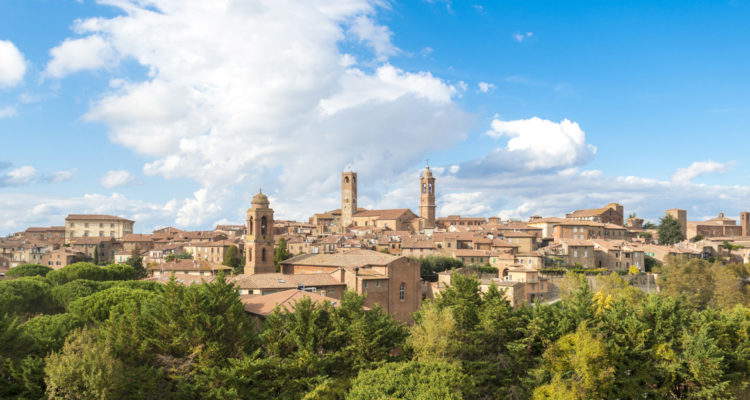 |
| View of Città della Pieve |
2. Passignano sul Trasimeno
This is one of the two main towns on Lake Trasimeno: it spreads out along a hill that slopes gently down to the lake, where there is a lakeside promenade full of restaurants, bars, and activities, and from where one can embark to reach the islands or the other Trasimeno resorts. A visit to the village can begin right from the lakefront, and then climb as you go towards the Rocca, of medieval origins inside which is the Museum of Boats, where you can learn more about lake navigation, an important economic resource for the local community. In the village it is then possible to visit the Renaissance church of San Rocco, as well as the church of San Cristoforo. Passignano also preserves a section of the ancient walls, which are distinguished by the presence of a curious Triangular Tower, one of the symbols of the town. The town is also the scene of the Palio delle Barche, an ancient event that has been held on the waters of the lake for centuries, culminating in the spectacular “burning of the Castle,” a fireworks display set to music.
 |
| View of Passignano sul Trasimeno |
3. Castiglione del Lago
This is the largest of the towns found on Lake Trasimeno, although it does not stand directly on the lake, but on a large promontory overlooking it.To get to the lake, one must descend from the hill and reach the shores where there are walks, health trails, campsites and beaches. The well-preserved ancient village includes some of the region’s most important historical and artistic remains. Foremost among them is Palazzo della Corgna, the residence of Ascanio della Corgna, who was the sovereign marquis of Castiglione del Lago from 1563 to 1571 and established his residence in the palace, designed by Galeazzo Alessi and richly decorated with works by artists such as Niccolò Circignani and Giovanni Antonio Pandolfi (Palazzo della Corgna is one of the most interesting sites of Mannerism in central Italy). The tour of the palace ends at the scenic Rocca del Leone, which spectacularly closes the village by towering over the lake and providing a splendid panorama. Also worth seeing are the 17th-century church of San Domenico and the 19th-century church of Santa Maria Maddalena. The islands can be reached from the landing stage: a visit to Isola Maggiore is not to be missed, on the top of which stands the 13th-century church of San Michele Arcangelo, which still retains the appearance of the period (on the altar is a Renaissance crucifix by Bartolomeo Caporali).
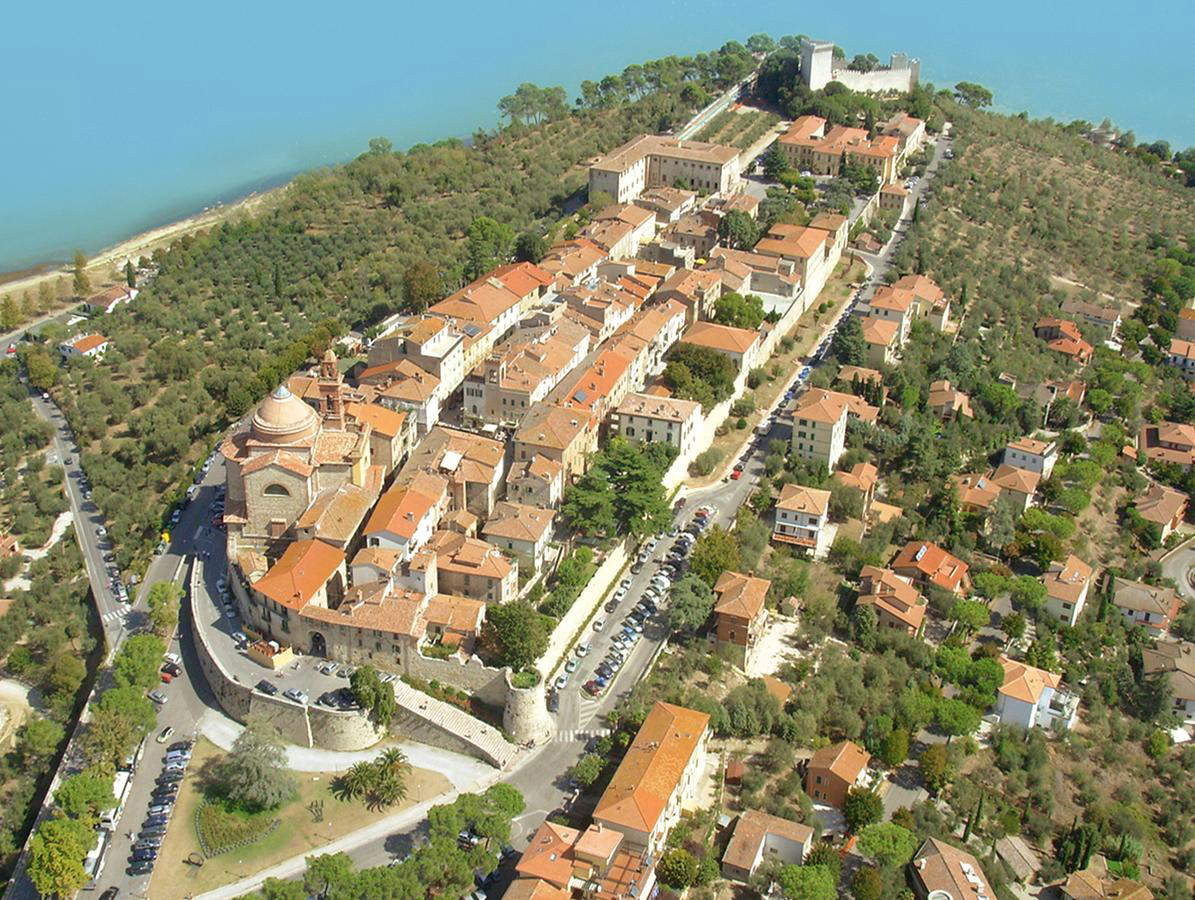 |
| View of Castiglione del Lago |
4. Vallo di Nera
A town of just over three hundred inhabitants, it is an almost intact medieval village of ancient origins (it was already inhabited in medieval times). It is located on the top of a hill at the beginning of the Valnerina and is entirely surrounded by walls and towers: the network of medieval lanes that make it up is still all intact. And of course you can visit the churches, including the church of Santa Maria Assunta, with frescoes of the Giotto school (including such unicums as Cola di Pietro’s Procession of the Whites ) and the parish church of San Giovanni Battista with Renaissance frescoes by Jacopo Siculo. Vallo di Nera is also home to the House of Tales, a valuable center for the preservation of local memory, where books and documents of popular culture are preserved.
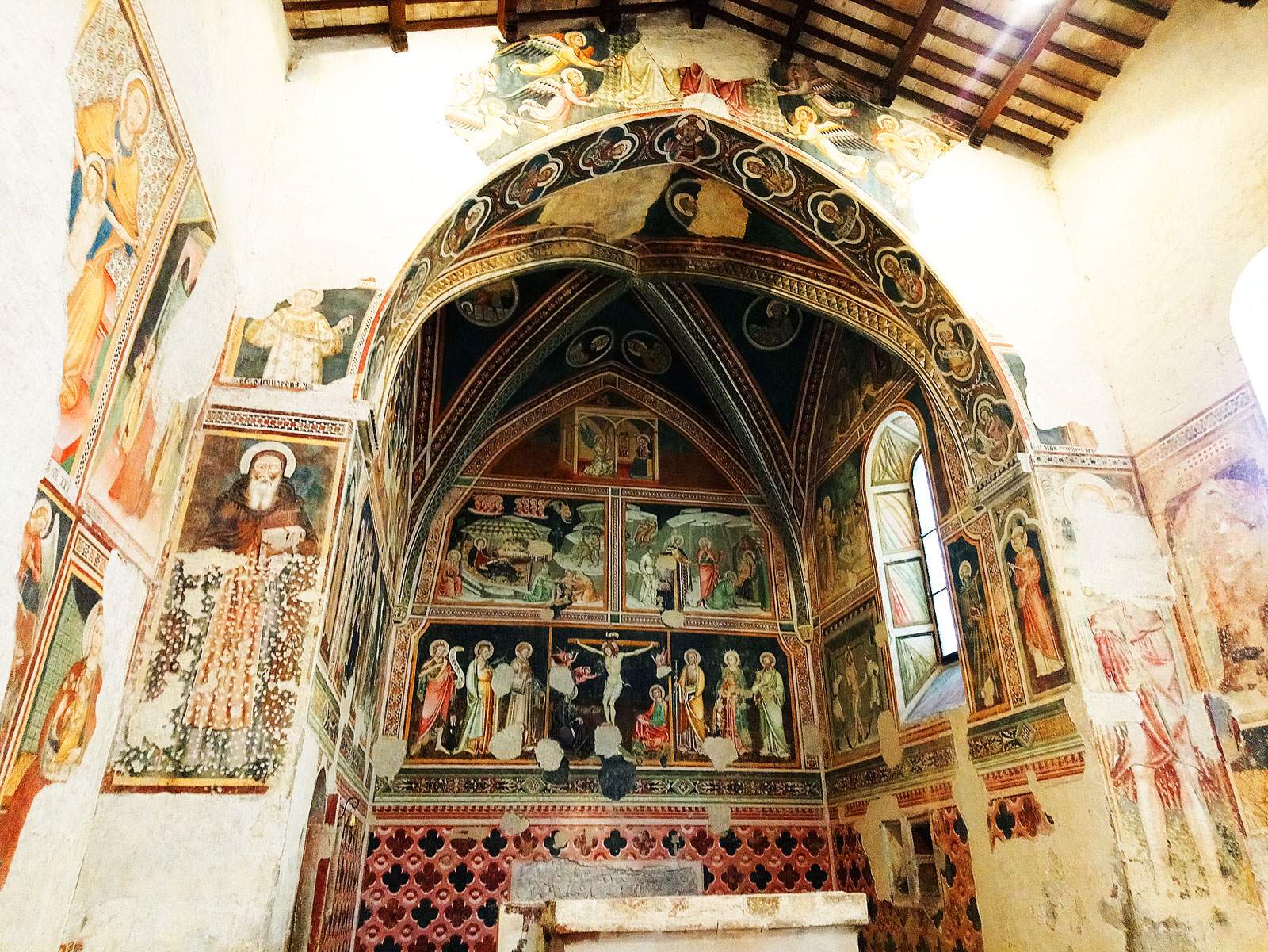 |
| Frescoes in the church of Santa Maria Assunta in Vallo di Nera. Ph. Credit Finestre Sull’Arte |
5. Spello
A town of remote origins (it was already a settlement of the ancient Umbrians, later to become the Roman Hispellum, and it was precisely in Roman times that it was one of the major cities of Umbria), Spello preserves intact its ancient appearance, walls included (although the latter remain in places: however, it is still possible to see the imposing Porta Venere, from the Augustan period, which opens with a three-barrel arch and is closed on the sides by two mighty towers: it is one of the symbols of the town). However, Spello is also linked to art: it is impossible not to visit the collegiate church of Santa Maria Maggiore, where one of the great masterpieces of the Renaissance is located, namely the Baglioni Chapel, with frescoes by Pinturicchio. Also worth seeing are the Palazzo Comunale, the Pinacoteca Civica and the city’s many churches. The city is also famous for the celebrated Infiorate of Spello, which typically takes place in June, on the occasion of Corpus Christi: the city, on this date, is covered with floral carpets throughout the streets of the historic center, to welcome the procession led by the bishop. Infiorate are also held for special events (for example, visits by the pope or heads of state).
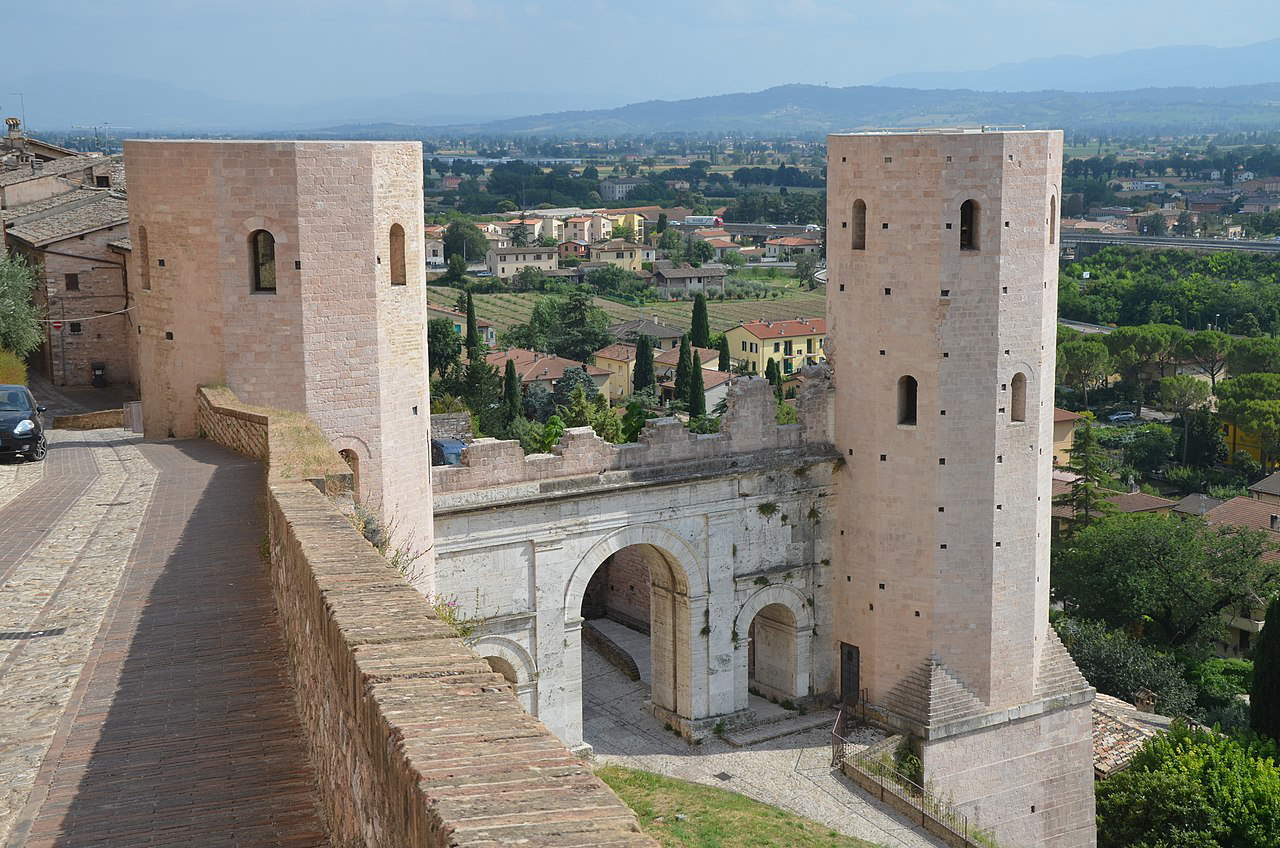 |
| Spello, Porta Venere. Ph. Credit Carole Raddato |
6. Piediluco
It is a small hamlet, of just over five hundred inhabitants, in the municipality of Terni, and is a pleasant village that stretches out on the shores of the lake of the same name, a few kilometers from the Marmore Falls. On the lake of Piediluco there were already settlements in the Bronze Age, but it is in the Middle Ages that the village develops and is enriched by the monuments that still distinguish it today: the Fortress (now in ruins), the walls, churches such as the Sanctuary of San Francesco, in Romanesque-Gothic forms, the church of Sant’Ermete (one of the oldest Roman churches in the area). During the Renaissance, on the other hand, public buildings were remodeled, such as the Palazzo Comunale and the Palazzo del Podestà . The Villalago complex, based in the villa of the same name, hosts concerts (of particular importance are those related to Umbria Jazz), while on the lakefront it is possible to admire Le libertà , an important work by Giulio Turcato, among the greatest Italian artists of the postwar period.
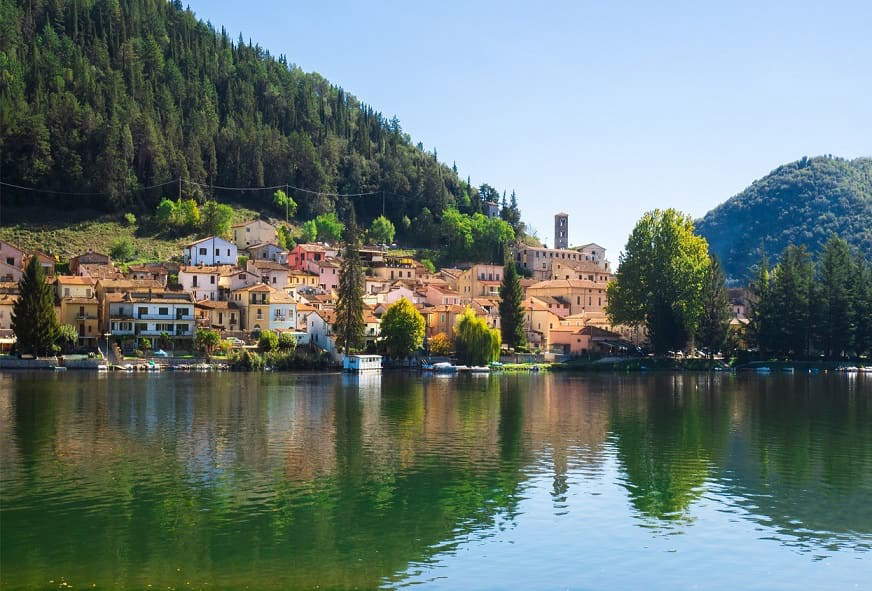 |
| View of Piediluco |
7. Deruta
Deruta is universally known for its ceramics, being one of the main centers of production in Italy. The history of this centuries-old art is told in the rich Regional Museum of Ceramics, established within the convent complex of San Francesco in the town’s historic center. There are ancient, modern and contemporary works, as well as educational rooms that tell the story of the art of working with terracotta. There are, of course, also kilns that can be visited. In the village there are also churches with masterpieces by Umbrian artists (in Sant’Antonio Abate it is possible to veere frescoes by Bartolomeo and Giovanni Battista Caporali, protagonists of the Umbrian Renaissance, while in the church of San Francesco there is the Madonna dei Consoli by Niccolò di Liberatore known as the Pupil, just to give a couple of examples), as well as the Pinacoteca Comunale (Municipal Picture Gallery) located in the 14th-century Palazzo dei Consoli (inside, there is a fresco by Perugino from the church of San Francesco).
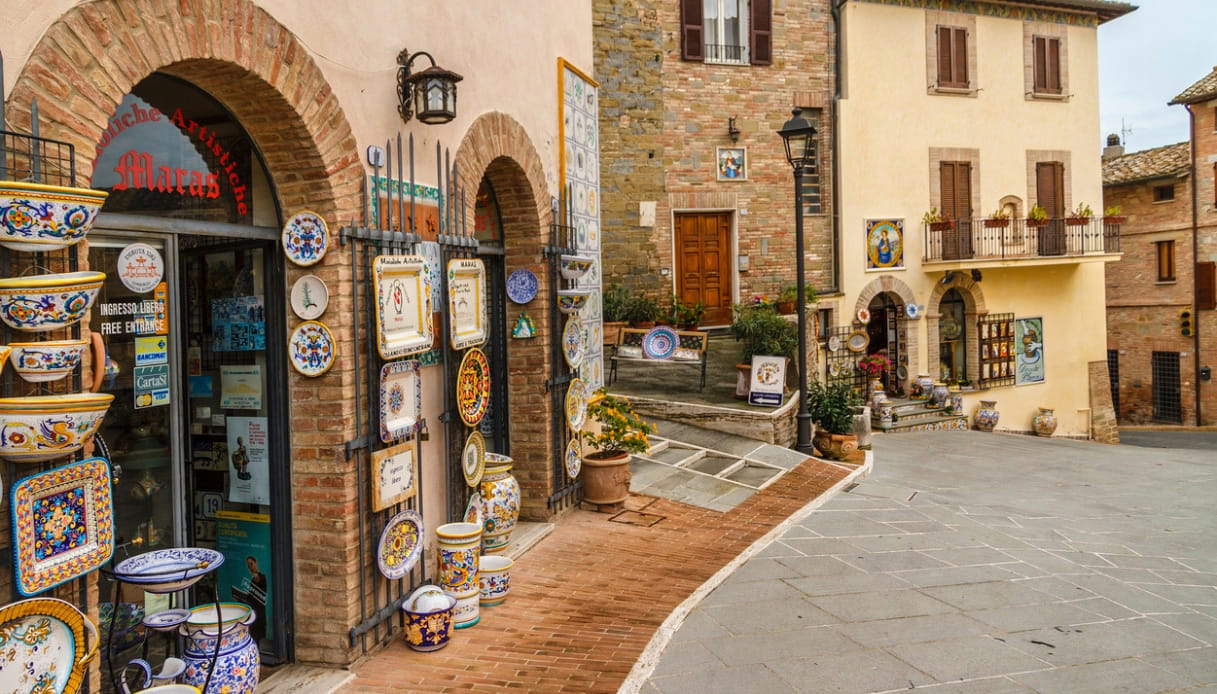 |
| Streets of Deruta |
8. Todi
Todi, of very ancient foundation (on the hill on which the town stands, the ancient Umbrians already lived), was a prosperous center from the earliest times, and during the Middle Ages it became first a free commune, then a seignory ruled by the Acts, and finally entered the domains of the Church State. The central Piazza del Popolo is one of the most recognizable squares in Italy, and along its sides stand the Duomo dell’Annunziata (with Ferraù Fenzoni’s spectacular fresco on the counter-façade, reminiscent of Michelangelo’s Last Judgement ), the Palazzo dei Priori, the Palazzo del Popolo and the Palazzo del Capitano, or the centers of medieval power, still perfectly preserved today (the Palazzo del Popolo houses the local Museo Civico). Todi is a city rich in art: just think of the Bramante-era Church of the Consolation, the Church of San Fortunato (a frescoed image of Jacopone da Todi is preserved here), the Monastery of the Lucrezie (where the Museo Lapidario and the Nido dell’Aquila theater are housed), and the very recent Beverly Pepper Park, which houses the works of the recently deceased American artist and is Umbria’s first contemporary sculpture park.
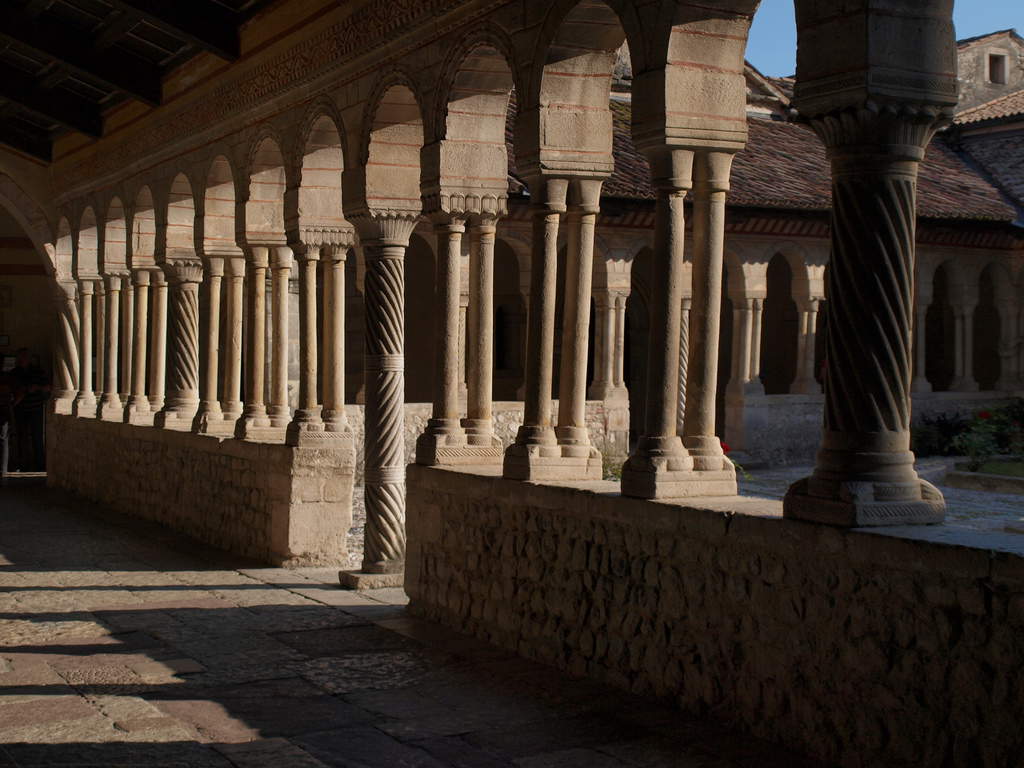 |
| The cloister of the abbey of Follina |
9. Trevi
Trevi was already a Roman town (it was called Trebia) and had some importance as it was located along the route of the Via Flaminia. The village, however, experienced its greatest development during the Renaissance, when it was one of the most important centers of the Duchy of Spoleto: at that time it was enriched with numerous buildings and churches. Worth seeing, in the picturesque village perched on the top of a hill (and where one will be surprised, however, to see the magnificence of so many palaces), are first and foremost the Cathedral of St. Emiliano and the museum complex of St. Francis, opened in the monastery of the same name that was suppressed during the Napoleonic era. Inside the museum are the antiquarium (with numerous artifacts from the Roman era), the rich picture gallery, which is one of Umbria’s most important museums of medieval and Renaissance art, the Museum of the Civilization of the Olive Tree, which recounts one of the region’s main economic activities (the oil produced around Trevi is among the best in Italy), and the Museum of the City and Territory: Trevi, moreover, was home to one of the oldest printing houses in Europe (opened in 1470), established in such a form that it can be remembered as the oldest printing company in the world. Also, the sumptuous Villa Fabbri dei Boemi, with its panoramic garden and spectacular early 17th-century frescoes, and Palazzo Lucarini, home of the local Museum of Contemporary Art
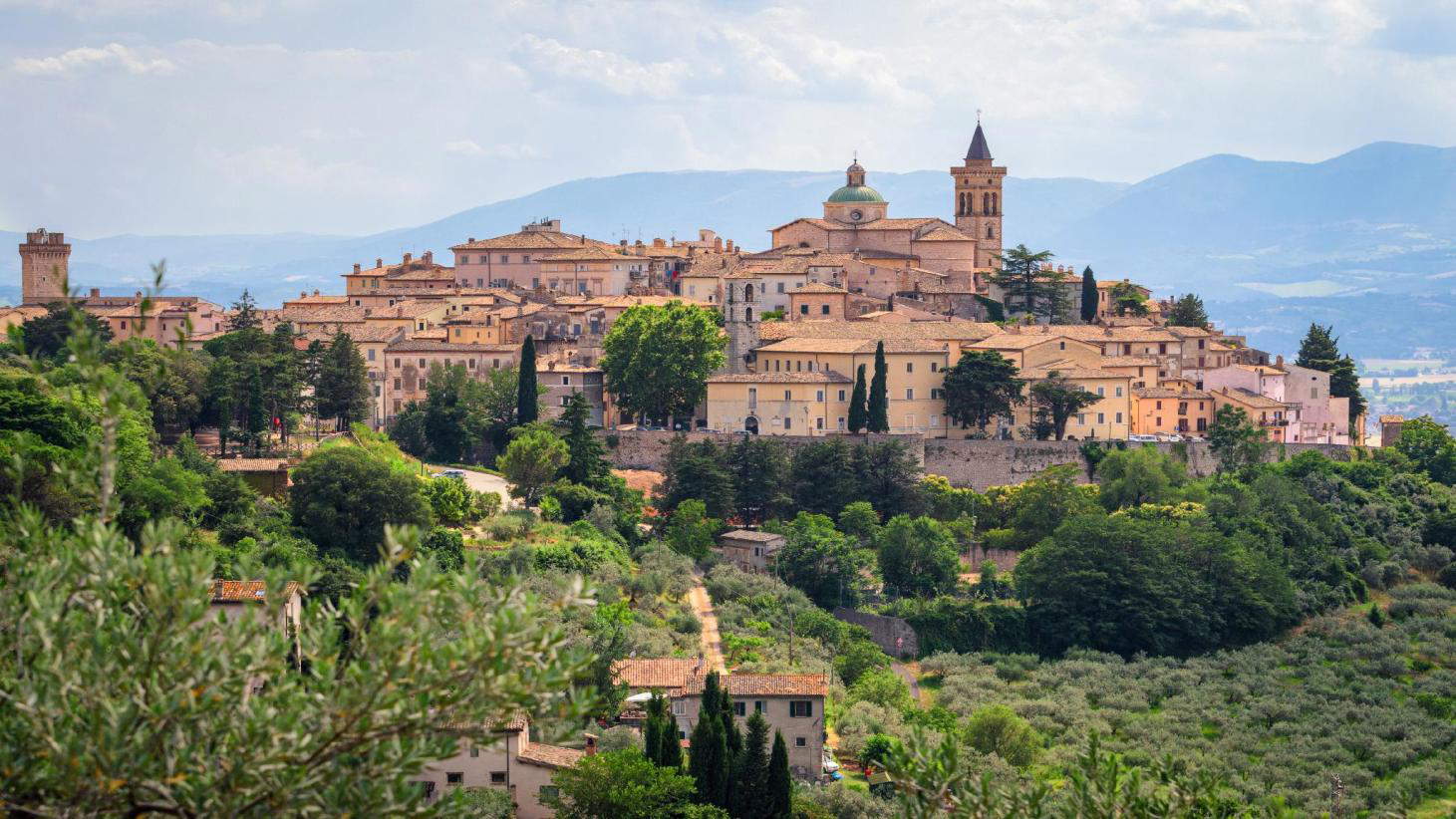 |
| View of Trevi |
10. Acquasparta
It is located in the province of Terni and is a place known for its waters, as the name of the town implies: according to legend, the local thermal baths of the Amerino were made to flow as early as St. Francis. Worth seeing in the village is the splendid Palazzo Cesi, residence of the family of the same name, which also hosted Galileo Galilei in the 17th century (and where there are frescoes by the Zuccari brothers), and the Renaissance Piazza Federico Cesi, the town’s main square. Acquasparta is also home to the Romanesque-Gothic church of San Francesco and the 17th-century churches of the Madonna del Giglio and the Sacramento. Near the village is also the Fonnaia bridge (from the Augustan period), near which the Romanesque church of San Giovanni de Butris was built.
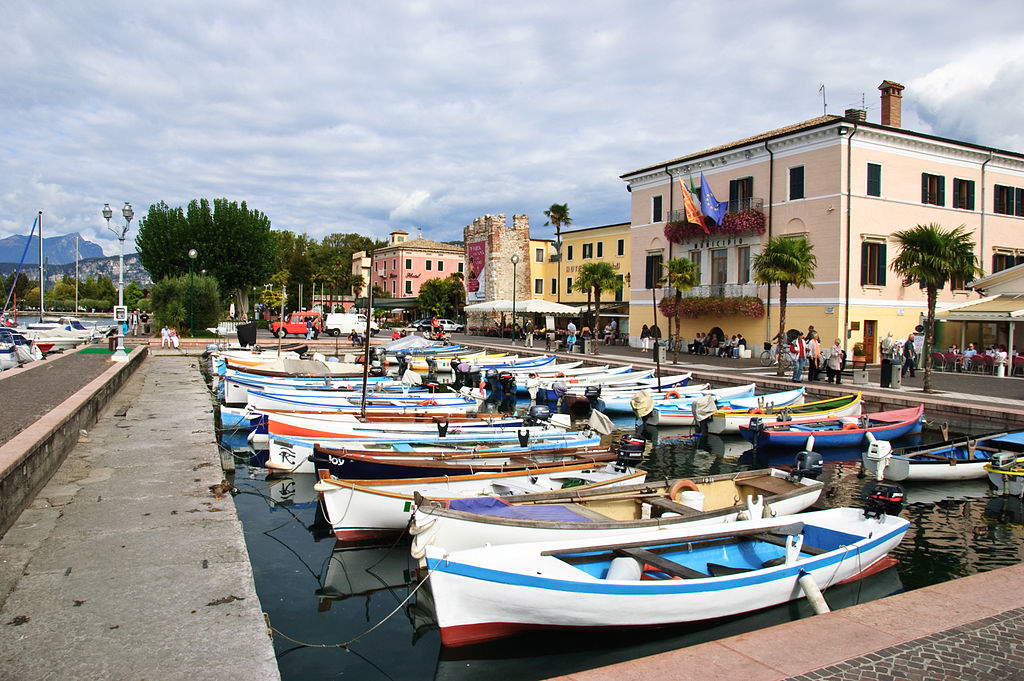 |
| The small port of Bardolino. Ph. Credit Richard Gillin |
 |
| Ten villages to visit in Umbria |
Warning: the translation into English of the original Italian article was created using automatic tools. We undertake to review all articles, but we do not guarantee the total absence of inaccuracies in the translation due to the program. You can find the original by clicking on the ITA button. If you find any mistake,please contact us.


























